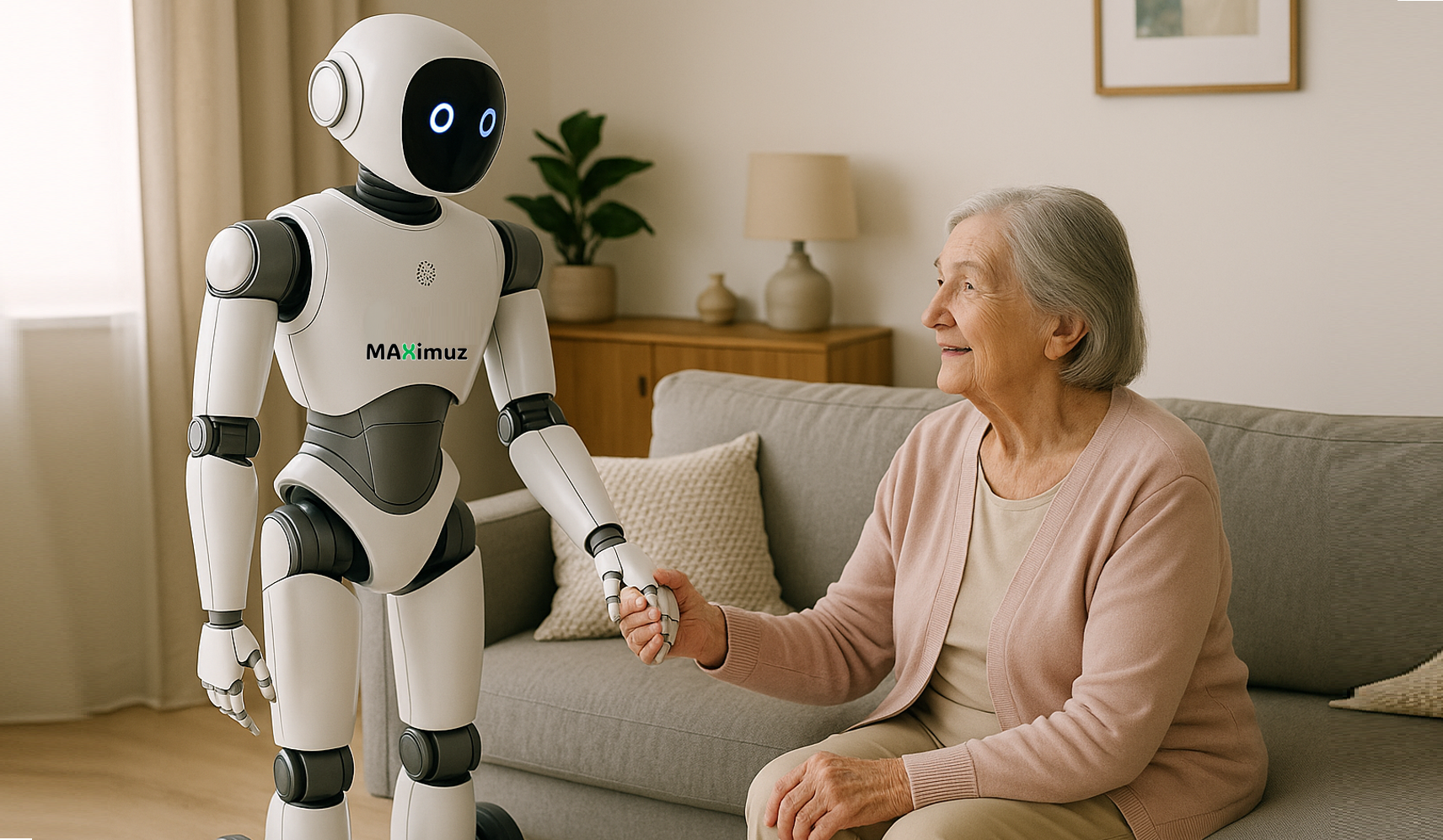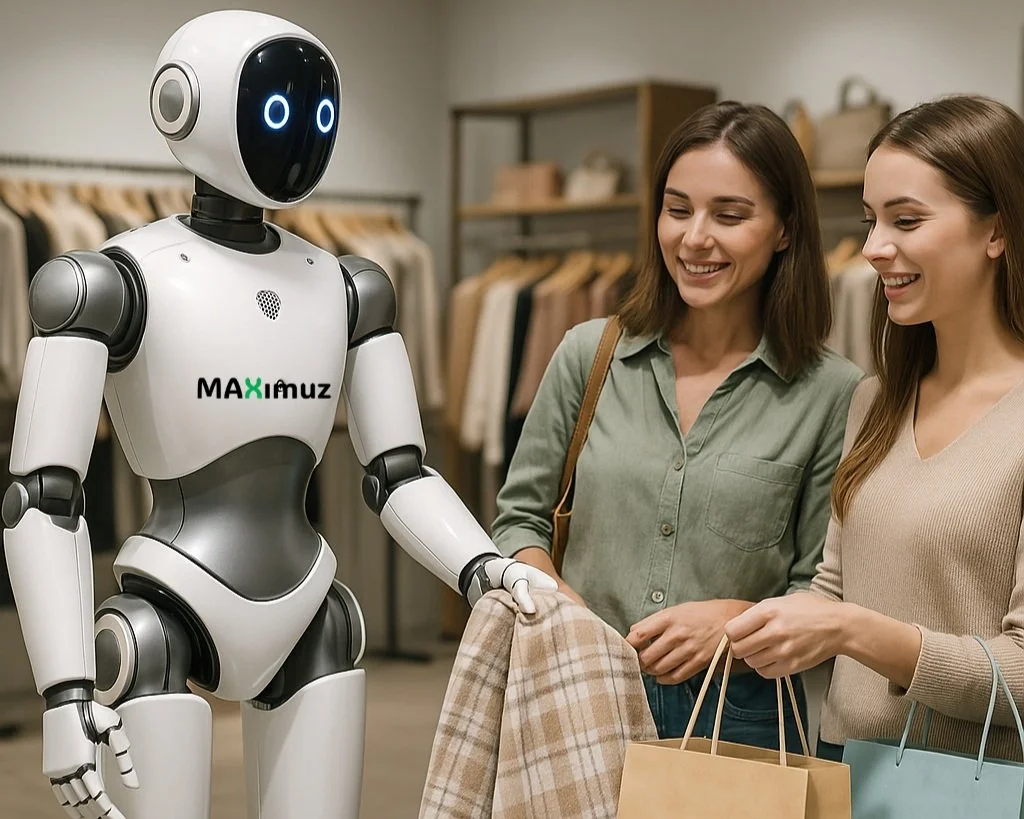Why Now Is the Time to Invest in Humanoid Robotics
Why Investing in Humanoid Robotics Is a Strategic Move for the Future
From factories and hospitals to retail stores and private homes, humanoid robots are beginning to step into roles previously unimaginable. As this transition accelerates, the current moment presents a rare opportunity not just to observe history in the making, but to shape it. For forward-thinking investors, businesses, and governments, the time to invest in humanoid robotics is now.
Introduction: A New Era of Human-Robot Collaboration
The age of humanoid robotics is no longer confined to science fiction. In recent years, we’ve witnessed dramatic advancements in artificial intelligence, sensor technology, battery efficiency, mechatronics, and machine learning all converging to bring humanoid robots from labs and exhibitions into the real world.
From factories and hospitals to retail stores and private homes, humanoid robots are beginning to step into roles previously unimaginable. As this transition accelerates, the current moment presents a rare opportunity not just to observe history in the making, but to shape it. For forward-thinking investors, businesses, and governments, the time to invest in humanoid robotics is now.
Part I: Why Humanoid Robotics? Why Now?
1. Labor Crisis and Demographic Shifts
Across the globe, industries are grappling with labor shortages. The healthcare, manufacturing, logistics, and hospitality sectors are facing growing demand with a shrinking workforce. Simultaneously, aging populations in countries like Japan, South Korea, Germany, and Italy are placing additional burdens on social services.
Humanoid robots offer a scalable, sustainable solution. Unlike task-specific robots, humanoids are adaptable. They can walk, talk, carry items, assist the elderly, serve food, or guide people much like a human. Their design makes them ideal for existing human environments, without needing costly infrastructure overhauls.
Stat: By 2030, the world will be short 85 million workers, according to Korn Ferry’s global talent crunch report.
2. Technological Maturity Meets Market Readiness
Until recently, the biggest bottlenecks in humanoid robotics were mobility, cognition, and cost. But the breakthroughs of the past three years — in AI models like GPT, edge computing, vision systems, and battery power density have changed the game.
AI assistants can now understand natural language, emotions, and contextual cues.
Humanoid robots can walk, run, climb stairs, or carry objects with precision.
Modular components are driving down costs, making mass production feasible.
Forecast: The global humanoid robot market, valued at ~$1.6 billion in 2024, is expected to grow at a CAGR of over 50% to exceed $25 billion by 2033.
3. Massive Investment from Tech Giants
Major tech companies are already placing their bets. Tesla’s Optimus, Figure AI’s Figure 01/02, and Xiaomi’s CyberOne are just a few examples. Amazon is exploring robots for warehouses and home assistance. NVIDIA is building simulation platforms for robot training. The race has started, and early investments today may mirror the returns of early investments in the internet or mobile industries.
In 2023 alone, over $3 billion was invested globally in humanoid robotics startups and technologies.
Part II: Where Will Humanoid Robots Be in 5–10 Years?
2025–2027: Commercial Entry & Market Testing
Deployment in controlled environments like hospitals, airports, retail stores, and eldercare facilities.
Use cases: concierge roles, package delivery, basic caregiving, security patrolling, promotional tasks.
AI-driven interaction becomes mainstream: facial recognition, speech synthesis, emotional intelligence.
Example: A humanoid at an airport guides passengers in multiple languages, monitors safety, and provides real-time analytics to operators.
2028–2030: Ecosystem Development & Mass Adoption
Rise of robot-as-a-service (RaaS) models: subscription-based access to robots for businesses and households.
Hardware will become modular and upgradable; software ecosystems emerge with app stores and plugins.
Education, tourism, hospitality, and smart cities integrate humanoids as permanent fixtures.
Cross-industry integrations: robots start learning from real-world experiences via closed-loop machine learning.
Anticipated: 1 in 5 medium-to-large enterprises will have at least one humanoid robot on staff by 2030.
2030–2035: Cognitive Autonomy and General-Purpose Tasks
Fully autonomous humanoid robots capable of unsupervised navigation, multi-step reasoning, and on-the-fly learning.
Robots act as companions, collaborators, and decision-support systems.
Integration with national infrastructure: disaster response, remote medical triage, education in rural areas.
Ethical frameworks and regulatory standards fully evolve to match capability levels.
Humanoid robots become indispensable, especially in aging societies, to maintain living standards and economic productivity.
Humanoid Robotics meets real world solutions
Humanoid robots are not coming they are already here. We are at the early stages of a massive transition, one that will impact how we live, work, care, learn, and interact. Investing in humanoid robotics today is not just a bet on machines, but a bet on solving global-scale human challenges: labor shortages, aging populations, economic inequality, and accessibility.
Part III: Investment Opportunities Today
1. Core Technologies
AI & ML: Natural language understanding, reinforcement learning, multimodal data processing.
Vision & Sensors: 3D LIDAR, depth cameras, facial expression detection.
Actuators & Hardware: Lightweight materials, flexible joints, battery systems.
Simulation Platforms: Digital twins, virtual training environments.
2. Application Developers
Just like smartphones needed apps, humanoid robots need software:
Sector-specific applications (e.g., airport assistance, school tutoring, medical monitoring).
Middleware that connects robot APIs with business systems.
B2B marketplaces for third-party modules.
3. Robotics Companies Building Platforms
MAXimuz Technology, Figure AI, Apptronik, Sanctuary AI, and 1X Technologies are among companies building full-stack humanoid platforms with both software and hardware ecosystems.
Example: MAXimuz is developing Actualize AI and NeuroCare to enable sensory, behavioral, and cognitive learning in real-time, making humanoids more intuitive and valuable in human spaces.
The Strategic Case for Early Investment
First-Mover Advantage
Just like the internet boom or mobile explosion, those who move early gain:
IP ownership
Brand equity
Ecosystem control
Access to the best talent and early users
De-Risking Through Diversification
The humanoid robotics value chain includes:
Component suppliers
Simulation platforms
OS/software ecosystems
Application developers
System integrators
This gives investors many entry points to diversify across hardware, software, and services.
Conclusion: The Future Is Standing on Two Legs
Humanoid robots are not coming they are already here. We are at the early stages of a massive transition, one that will impact how we live, work, care, learn, and interact. Investing in humanoid robotics today is not just a bet on machines, but a bet on solving global-scale human challenges: labor shortages, aging populations, economic inequality, and accessibility.
The next decade will determine the winners of the humanoid revolution. The question is no longer if humanoid robots will become part of our lives it’s who will lead the way.
For visionary investors and organizations, the time to move is now. The walking future is already knocking.
About MAXimuz Technology
MAXimuz Technology is a robotics innovation company dedicated to solving real-world problems through the convergence of artificial intelligence and humanoid robotics. With a focus on scalability, ethics, and usability, the company is shaping the next generation of robotic assistance platforms.
For media inquiries, partnerships, or beta program enrollment, please contact:
📩 press@maximuz.tech | 🌐 www.maximuz.tech


